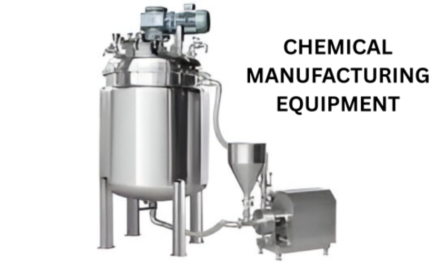Research and Development (R&D) plays a critical role in the specialty chemicals sector, driving innovation, improving product performance, and helping companies stay competitive in a rapidly evolving market. In this industry, R&D is essential for creating new chemical formulations, processes, and technologies that meet the needs of diverse applications, from automotive and electronics to agriculture and healthcare. Here’s a closer look at the key roles that R&D plays in the specialty chemicals sector:
1. Product Innovation
- New Product Development: R&D is crucial for the development of new specialty chemicals that offer unique properties or performance benefits, such as better durability, higher efficiency, or enhanced sustainability. For example, the development of biodegradable plastics, eco-friendly coatings, or advanced lubricants is driven by ongoing R&D efforts.
- Customization: Specialty chemicals are often tailored to meet the specific needs of industries like electronics, pharmaceuticals, automotive, and personal care. R&D helps create highly specialized formulations that cater to niche markets, whether it’s a new material for 3D printing or a new drug delivery system.
2. Technological Advancements
- Process Optimization: R&D focuses on improving the efficiency and sustainability of manufacturing processes. By developing new techniques or optimizing existing ones, specialty chemicals companies can reduce costs, improve product yield, and minimize waste. For example, advancements in green chemistry or biotechnology are enabling the development of cleaner, more sustainable production methods.
- Advanced Materials: R&D is critical for creating advanced materials that meet the evolving demands of industries such as electronics, aerospace, and automotive. This includes developing high-performance composites, conductive polymers, and nanomaterials with superior properties that can enhance the functionality of products.
3. Sustainability and Environmental Impact
- Eco-friendly Solutions: With increasing pressure to reduce the environmental impact of chemical products, R&D is at the forefront of developing more sustainable and environmentally friendly solutions. This includes the creation of green chemicals, biodegradable materials, and low-carbon production methods. Companies invest in R&D to meet environmental regulations, respond to consumer demand for sustainability, and align with corporate social responsibility goals.
- Waste Reduction and Recycling: R&D also focuses on improving recycling processes and finding ways to repurpose materials, which contributes to a more circular economy. Research into more efficient recycling methods for plastics, metals, and other materials is helping to reduce waste in the chemical industry.
4. Regulatory Compliance
- Adherence to Regulations: The specialty chemicals sector is subject to numerous regulatory requirements concerning safety, health, and environmental impact. R&D helps companies develop products and processes that comply with local and international regulations, such as REACH (Registration, Evaluation, Authorization, and Restriction of Chemicals) in the European Union or EPA regulations in the United States. Research is crucial for ensuring that new products meet safety standards, perform effectively, and minimize adverse effects on human health and the environment.
- Safety Innovations: Safety is a paramount concern in the chemical industry. R&D is involved in developing safer chemicals, materials, and production methods that reduce the risk of accidents and hazards. This includes advancements in toxicology, flammability testing, and handling protocols.
5. Market-Driven Research
- Consumer Demands and Trends: R&D in the specialty chemicals industry is closely aligned with evolving market demands. For instance, the rise in demand for electric vehicles (EVs) has led to increased R&D investment in the development of high-performance battery materials and lightweight composites. Similarly, growing consumer interest in organic skincare products has spurred research into biotechnology-derived ingredients and natural chemicals for cosmetics.
- Emerging Markets: R&D also focuses on developing products for emerging markets with specific needs. For example, there is growing interest in agricultural chemicals that improve yields and are suitable for regions with limited water resources or extreme climates. R&D helps develop tailored solutions for local markets.
6. Enhancing Product Performance
- Improving Functionality: R&D ensures that specialty chemicals continue to meet the high-performance standards demanded by modern industries. This includes developing new catalysts, additives, and polymers that can enhance product properties such as heat resistance, flexibility, adhesion, and corrosion resistance.
- Durability and Longevity: For products used in industries like automotive and aerospace, R&D is essential to create chemicals and materials that enhance durability, reducing the need for replacements and repairs. For instance, research into long-lasting coatings and anti-corrosive materials extends the life of products and reduces maintenance costs.
7. Collaboration and Partnerships
- Academic and Industry Collaborations: Many specialty chemicals companies collaborate with academic institutions, research organizations, and other industry players to drive innovation. Joint research efforts help pool resources, access cutting-edge research, and accelerate the commercialization of new technologies. These collaborations are essential for keeping pace with rapidly changing technological trends.
- Cross-Industry Partnerships: The specialty chemicals sector often works closely with other industries such as automotive, electronics, pharmaceuticals, and energy to develop tailor-made solutions for specific applications. For example, R&D in materials science for the automotive industry may involve partnerships between chemical companies and automakers to develop more efficient components for electric vehicles.
8. Cost-Effective Production
- Raw Material Sourcing: R&D also focuses on finding alternative raw materials or more cost-effective ways to source them, reducing dependence on expensive or limited resources. For example, research into bio-based chemicals or alternative feedstocks can help reduce the cost of production and improve the sustainability of the chemical industry.
- Improving Manufacturing Techniques: Through R&D, companies can explore innovative manufacturing processes that improve efficiency and reduce costs, such as automation and process intensification. These innovations help companies stay competitive by improving their bottom line.
9. Intellectual Property and Competitive Advantage
- Patents and Proprietary Technologies: R&D allows specialty chemicals companies to develop unique technologies that can be patented. Intellectual property (IP) created through R&D gives companies a competitive edge, protects their innovations, and creates new revenue streams. Patents for new chemical formulations, processes, or materials can differentiate a company in the marketplace and enhance its market share.
- Market Leadership: Companies that invest heavily in R&D can establish themselves as leaders in niche markets, gaining a reputation for innovation and reliability. Strong R&D capabilities are often a key factor in attracting high-value customers and partners.
Conclusion
R&D is vital for the growth and success of the specialty chemicals sector. It drives product innovation, improves sustainability, enhances product performance, and ensures regulatory compliance. By investing in R&D, companies can create cutting-edge products and solutions that meet the evolving needs of diverse industries, from automotive and electronics to pharmaceuticals and agriculture. As the demand for more sustainable, high-performance, and custom-tailored chemicals continues to rise, the role of R&D will become even more critical in shaping the future of the specialty chemicals industry.
Hashtags
#ChemicalInnovators #ChemicalBreakthroughs #ChemicalSolutions #ChemicalAdvancements #ChemicalDiscoveries #ChemicalProgress #ChemicalRevolution #ChemicalEvolution #ChemicalExcellence #ChemicalLeadership #ChemicalInnovations #ChemicalTransformations #ChemicalBreakthrough #ChemicalInnovations #ChemicalAdvances #ChemicalProgression #ChemicalRevolutionary #ChemicalInnovative #ChemicalDevelopment #ChemicalResearchAndInnovation

















